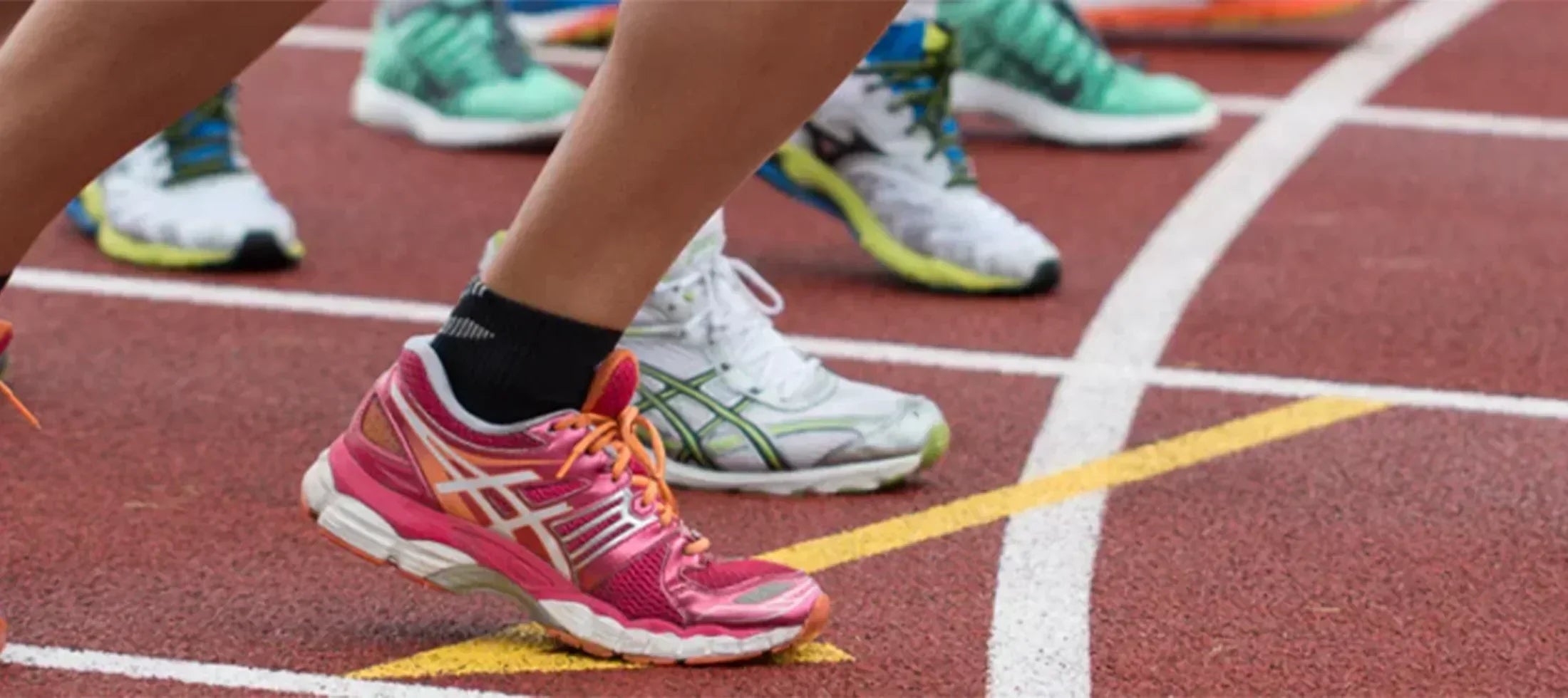Overview
Running is the most effective way to shed extra fat. It involves all the main muscles in the body, which burn fat. Even after running, your body burns calories to restore oxygen and muscle repair. Running is simple, requires no special equipment, and can be performed anywhere. Therefore, it's the simplest way to lose weight. Let’s discuss how to use running as a tool for weight loss.
Understanding the Basics of Running for Weight Loss
There is a science behind running to lose weight. The type of running, weight, speed, and distance affect the number of calories expended. When you run, your muscles work in groups, including leg, arm, and back muscles.
How Running Helps Burn Calories and Fat
When you run, it taps your stored energy. This energy comes from your stored fats and glycogen. This calorie burning is directly proportional to your weight, speed, intensity, and distance covered. 606 calories are burned when running at 5 mph for an hour. Fat storage is utilized in steady-state running as a source of energy, while during the high-intensity sprints stored glycogen is used.
Different Types of Running for Weight Loss
1. Steady-state running is most effective for building endurance and gradually burning fat. It burns ~600–700 calories per hour.
2. Sprint Intervals: It involves both short bursts and running. It is best to burn fat during running and afterburn. It burns ~700–900 calories per hour.
3. Hill Runs: Uphill running increases resistance and muscle strength. It is the most effective method of burning calories without running fast.
4. Long-Distance Running: Long run utilizes energy from the stored fat. If proper nutrition is not taken, it may rupture your muscles.
Hers is a comparison between running and other cardio.
|
Exercise |
Calories Burned (Per Hour, 160 lbs) |
Weight Loss Effectiveness |
|
Running (7 mph) |
861 kcal |
⭐⭐⭐⭐⭐ |
|
Cycling (12-14 mph) |
576 kcal |
⭐⭐⭐⭐ |
|
Swimming (moderate) |
423 kcal |
⭐⭐⭐ |
|
Walking (3.5 mph) |
314 kcal |
⭐⭐ |
|
Jump Rope |
861 kcal |
⭐⭐⭐⭐⭐ |
Creating a Running Plan for Weight Loss
The ideal running plan depends on your goal and fitness level. Start running according to the given table; it’s specially designed according to the fitness level.
|
Running Frequency |
||
|
Fitness Level |
Running Days/Week |
Recovery |
|
Beginner |
3–4 days |
Rest/Cross-training |
|
Intermediate |
4–5 days |
1–2 rest days |
|
Advanced |
5–6 days |
1 rest day |
Every run has different benefits. Set the duration time according to the type of running.
|
Running Duration & Intensity |
||
|
Run Type |
Duration |
Benefit |
|
Sprints |
20–30 min |
High-calorie burn, EPOC effect |
|
Moderate |
30–45 min |
Steady fat burn, endurance |
|
Long Runs |
60+ min |
Builds stamina, gradual fat loss |
Combining running with strength training helps you to lose fat and preserve lean mass. You can set your goal by checking the frequency of specific workouts.
|
Running + Strength Training |
||
|
Workout Type |
Frequency |
Key Exercises |
|
Strength Training |
2–3x/week |
Squats, Lunges, Deadlifts, Core |
|
Running |
3–6x/week |
A mix of sprints, steady runs |
|
Rest/Cross-training |
1–2x/week |
Yoga, Cycling, Swimming |
⚠️ Note: Work out what your body allows you and prevent yourself from injury.
The Role of Diet in Running and Weight Loss
Diet plays an important role in running. A balanced diet fuels running and helps with fat loss.
- Protein: To support muscle recovery, consume more protein, especially after running or a workout. You can eat eggs, chicken, fish, etc.
- Healthy Fats: Healthy fats provide long-lasting energy that helps you recover after a workout. You can consume nuts, olive oil, avocados, etc.
-
Complex Carbs: Choose complex carbohydrates instead of simple ones. Some people make the mistake of completely avoiding carbohydrates, which is strictly prohibited according to the guidelines. Carbohydrates are the main sources of instant energy. You can eat oats, sweet potatoes, quinoa, etc.
- Pre-run: To fuel your body, eat carbohydrates 30 to 60 minutes before jogging.
- Post-run: Eat Protein + Carbs after running to support recovery.
Boosting Your Weight Loss with Running Techniques
The running technique determines the rate of calories burned.
- High-Intensity Interval Training (HIIT) Running: You may burn more calories in less time with HIIT. After working out, burn calories in such exercises to recover the body.
- Fasted Running: Is It Effective?: Fast running with an empty stomach will be helpful for fat burning, but it does not work for everyone. You can try it but always listen to your body.
- The Afterburn Effect (EPOC) and Its Benefits: Sprints and hill running are high-intensity running that triggers the EPOC (Excess Post-Exercise Oxygen Consumption). Such runnings are very useful for fat burning.
Common Mistakes to Avoid
Running is an excellent way to lose body fat, but certain mistakes can slow down the process and you will not receive the desired results. Sometimes it may lead to injury. It includes overtraining, neglecting strength training, and poor nutrition. Let's discuss them one by one.
- Running Too Much or Too Little: Balance is the key. Overtraining burdens your body; it leads to burnout and sometimes injury. On the other hand, too little running will not create any results. Therefore, the ideal choice is to listen to your body.
- Poor Nutrition Choices: Choosing unhealthy food choices can lead to nutritional deficiencies. During intense training, you need more calories, but these calories must be from the best food sources for all the essential nutrients, vitamins, and minerals. Consume carbs before running to fuel your body, and eat a mixture of protein and carbs after a workout for muscle repair.
- Overlooking Recovery and Rest: Proper stretching and skipping the rest day may lead to injury. Proper sleeping, hydration, and foam rolling may improve the recovery.
Staying Motivated and Consistent
Some people lose consistency due to a lack of motivation. For this purpose, be realistic about running and fat loss limits. How can you do that? Let's discuss it one by one.
- Setting Realistic Goals: Set clear, realistic, and achievable goals. Realistic goals are important for motivation, as you will feel more motivated when you accomplish even the smallest portion of your goal.
- Tracking Progress (Apps, Wearables, Logs): You can track your running mileage with smartphones like Strava, Health App, and others. Posting your achievements on social media will help you stay motivated. Like-minded people motivate.
- Overcoming Plateaus: If you are stuck at a point, change the strategy to achieve the goal by increasing speed and distance. You can also incorporate the strength training.
Conclusion
Choose fat loss over weight loss. Make a structured plan, eat a sufficient diet, and stay hydrated. Set realistic goals that don't burn you out and avoid injuries. Make running a part of your life. Running helps you stay healthy. It not only supports calorie burn but also boosts metabolism, improves cardiovascular endurance, and strengthens mental resilience. Over time, running builds lasting habits that transform your lifestyle, making it easier to maintain a healthy weight without extreme restrictions or temporary solutions. With patience and dedication, running can become a sustainable path to long-term fat loss and overall wellness. For even better results, combine it with a structured diet plan for weight loss that fuels your performance and supports recovery.
FAQs
Can running alone help me lose weight?
Yes, running can help you lose weight because it burns calories and increases your energy expenditure. However, relying on running alone without adjusting your diet may slow progress. Sustainable weight loss usually combines regular running with healthy eating and other forms of exercise.
Is sprinting better than jogging for fat loss?
Sprinting can burn more calories in less time and may boost fat loss due to its high intensity. Jogging, however, is easier to maintain for longer durations and can still effectively support fat loss. The better option depends on your fitness level and ability to recover from workouts.
How many calories can I burn by running?
The number of calories burned while running depends on factors like your weight, speed, and distance covered. For example, a person weighing around 155 pounds can burn roughly 300–400 calories during a 30-minute moderate-paced run. Running faster or uphill will burn even more.
Does running burn belly fat specifically?
No, running does not specifically burn belly fat. While running is an excellent way to burn calories and contribute to overall fat loss, you cannot target fat loss in one specific area of your body. Fat loss patterns are influenced by genetics, hormones, and total body fat percentage.
Is running on a treadmill as effective as running outside for weight loss?
Yes, treadmill running and outdoor running can both help with weight loss, but they feel different. A treadmill provides a controlled environment with adjustable incline and speed, while outdoor running engages more muscles due to varied terrain. The best choice depends on personal preference and consistency.



Share:
The Four Horsemen of Weight Loss
The Best Way to Drop 10 Pounds in a Month